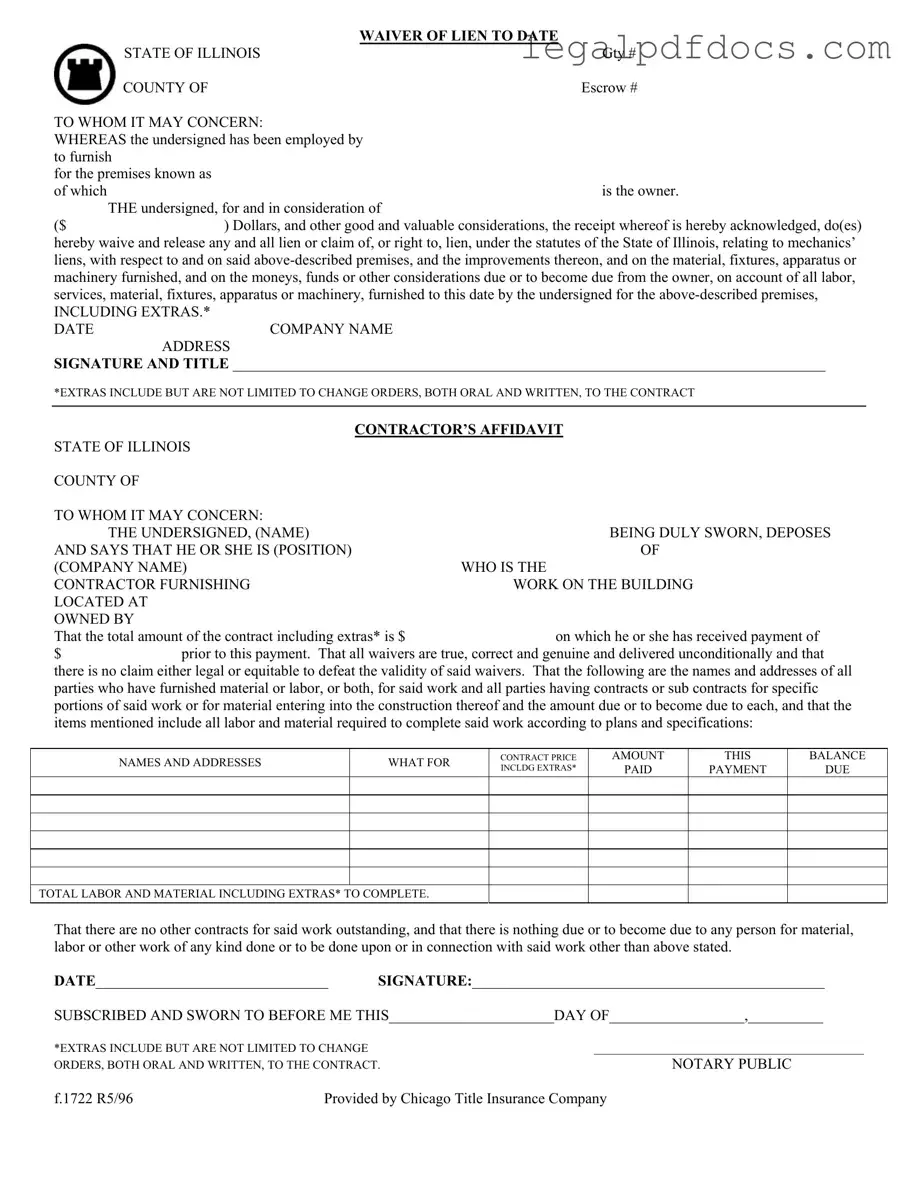The Chicago Title Waiver Format form serves as an essential document in the construction and real estate industries, particularly in Illinois. This form is designed to protect property owners and contractors by clarifying the financial obligations associated with a construction project. At its core, the form includes a waiver of lien, which allows contractors and subcontractors to relinquish any claims against a property for unpaid work or materials. By signing this document, the undersigned acknowledges receipt of payment and agrees to waive any rights to file a mechanics' lien on the property in question. The form also requires detailed information about the contractor, including their name, position, and the company they represent, along with specifics about the contract amount and any extras that may have been incurred. Additionally, it outlines the responsibilities of the contractor to disclose all parties involved in the project, ensuring transparency and accountability. This comprehensive approach not only streamlines the payment process but also safeguards the interests of all parties involved, fostering trust and collaboration in the construction industry.
